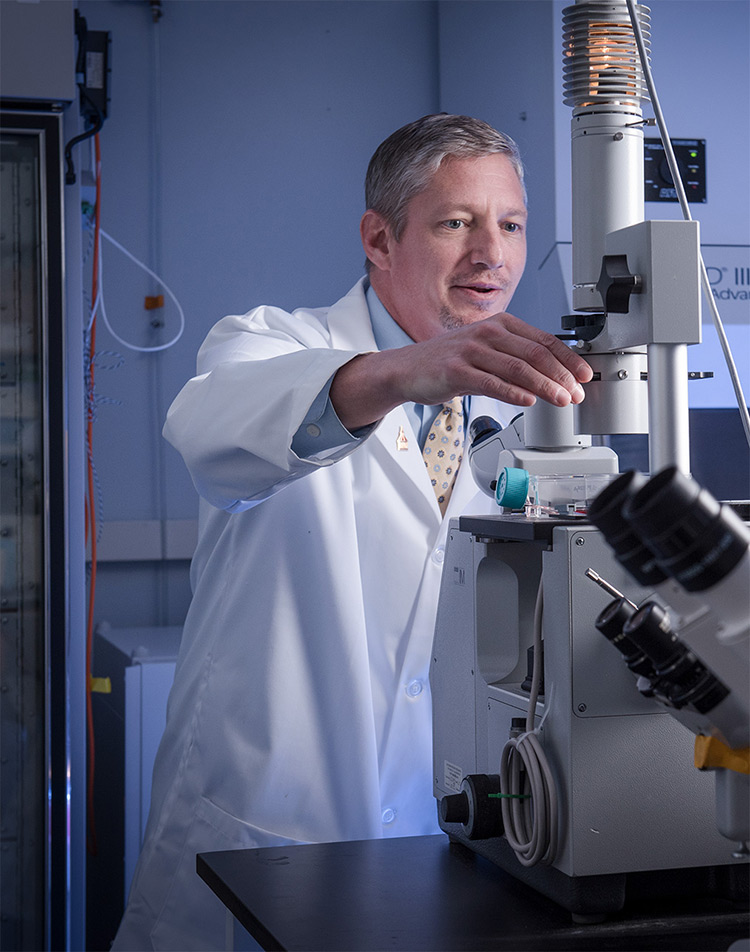What do MicroRNAs Have to Do with Inherited Prostate Cancer?

Dr. Shawn Lupold in the lab.
The genes linked to prostate cancer – that we know of — are just the tip of the iceberg. What about the other 98 percent of the genome?
We have learned a lot about certain mutated genes, such as HOXB13 or BRCA2, that can predispose a man to prostate cancer. But guess what? These genes are just the tip of the iceberg.
“They are protein-coding genes,” explains scientist Shawn Lupold, Ph.D., the Catherine Iola and J. Smith Michael Distinguished Professor of Urology and Co-Director of the Sidney Kimmel Comprehensive Cancer Center Prostate Cancer Program. “They code (provide the information for) cells to make a certain protein or enzyme. And remarkably, less than 2 percent of the genome codes for proteins!”
What about all the genes we don’t know much about? The other 98 percent? Some are “noncoding RNAs,” tiny throttles, gas pedals, or volume-control knobs. They’re “important regulatory molecules that can orchestrate when other genes are turned on or off, or turned up or down,” says Lupold. One important class is known as microRNAs, “We are still learning what they do.”
In what may be the largest study of its kind, Lupold and scientist William Isaacs, Ph.D., in collaboration with NorthShore University scientist Jenfeng Xu, Ph.D., have sequenced the microRNA-coding region (microRNAome) of 1,500 prostate cancer patients, looking for inherited alterations that are associated with an increased risk of developing lethal prostate cancer.
The results are still preliminary, but they have identified promising genetic variations in several microRNA genes. “We anticipate that these studies may identify new heritable risk factors for prostate cancer that could lead to new diagnostic or prognostic tests.”
